It has been a week without posts, which I don’t even do when I’m traveling, always having a couple of even token posts appear to keep from announcing that the house is empty. Yet I’ve been here in Walkabout Studios and the environs the entire time, just wrapped up in projects, to say nothing of it being ridiculously hot out there and not only is it uncomfortable to be out, any photo subjects largely feel the same way. So before another Tripod Holes appears, we’ll have this one.
There have been the occasional subjects, and here’s one of them from a few days back:
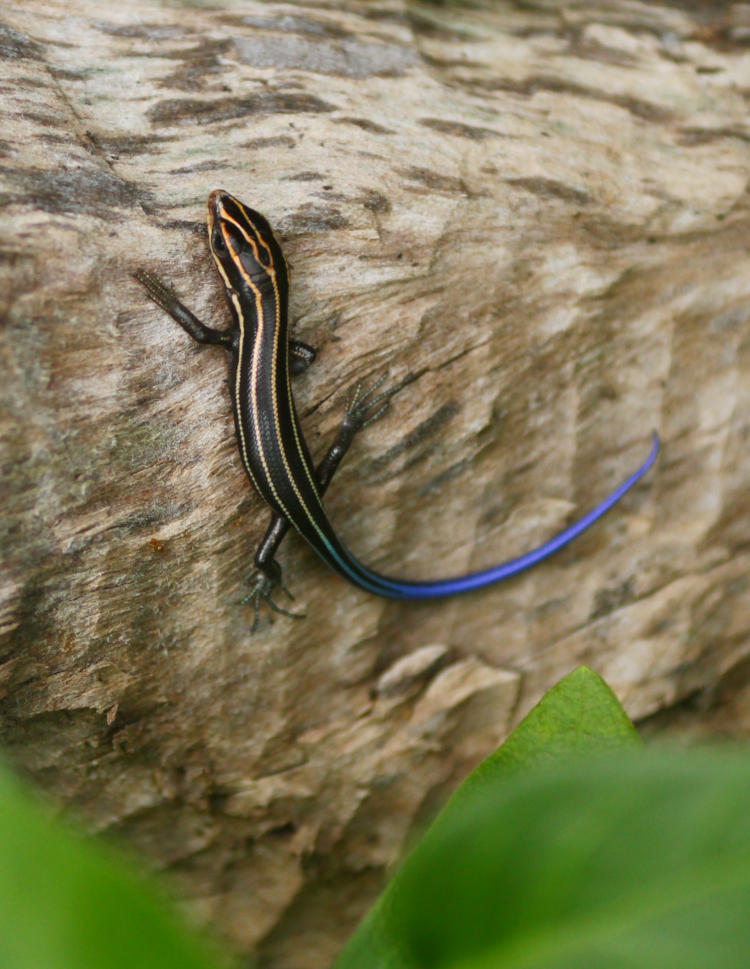
That’s a newborn American five-lined skink (Plestiodon fasciatus) perched on a section of beaver-gnawed trunk out front of Walkabout Estates, and it’s no larger than the newborn anoles (so, maybe a hair over 50mm in total length.) I was a little surprised to see it, because while the adult skinks were in evidence out front in the early spring, I have seen no sign of them for well over a month now. And this is literally half-a-meter from the first appearance of the newborn anoles too, both right underneath the big Japanese maple near the front door, so it doesn’t appear either species is so territorial that the other is disallowed, which is fine by me. There’s a little overlap in their habits too, in that skinks tend to be ground dwellers but climb walls readily enough, while anoles prefer the branches of lower plants but scamper across the ground without issues, which means both can be found venturing across the front steps at times, though so far not at the same time. Regardless, welcome anyway. We’ll see how many more photos I get.
Meanwhile, one of the bigger projects was working on a new macro softbox. The flash unit that I was using was discontinued some time ago, perhaps as late as the early nineties, which means its days are numbered, and my main unit conked out a couple weeks back without luck in replacing or repairing it yet (I have not given up my efforts.) So I have considered what is going to replace it in this eventuality, and well as needing something to shoot with right now. Not going into specific details as to the whys and wherefores at the moment, but I need a smaller, lighter flash unit with specific light characteristics, and have been using a custom softbox/diffuser unit of my own construction. Switching flashes meant this wouldn’t work, having been specifically fitted to the older Sunpak model, so a new one was needed. And while contemplating this, I thought, Hey, I have this 3D printer here…
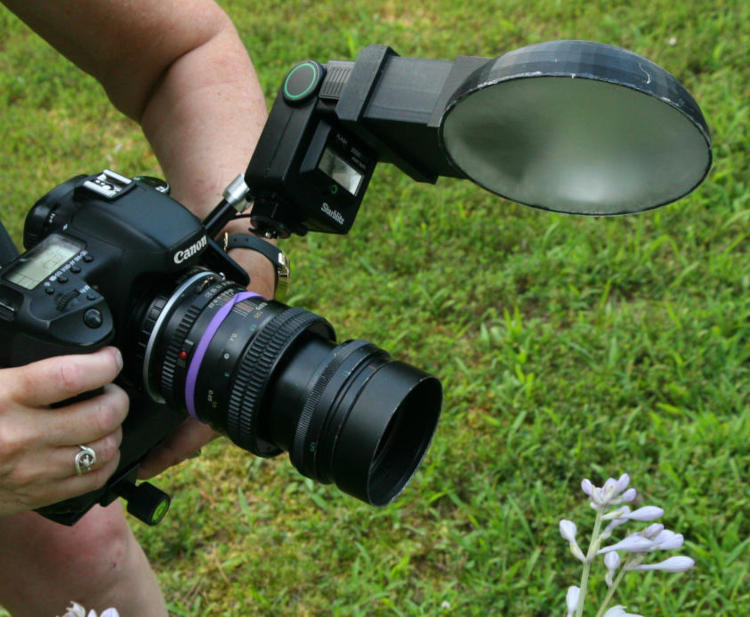
The initial design and test prints came out far better than expected, and that’s what you see here mounted on one of the two little flashes in consideration, some cheapass K-Mart unit known (or not) as a Starblitz 2500 BTZ that I don’t even know how I obtained. It has a broken shoe foot and a missing battery door, both of which I replaced with the help of the printer and Blender design software, the idea being that this was quite small and quite light, and the limited light output wouldn’t matter much for macro work. I also have a Canon 300EZ unit in consideration as well, and mounts for both were designed and printed, fitting far better than expected, almost as if I know what I’m doing.
The real question, of course, is how well it all works. The acid tests were last night.
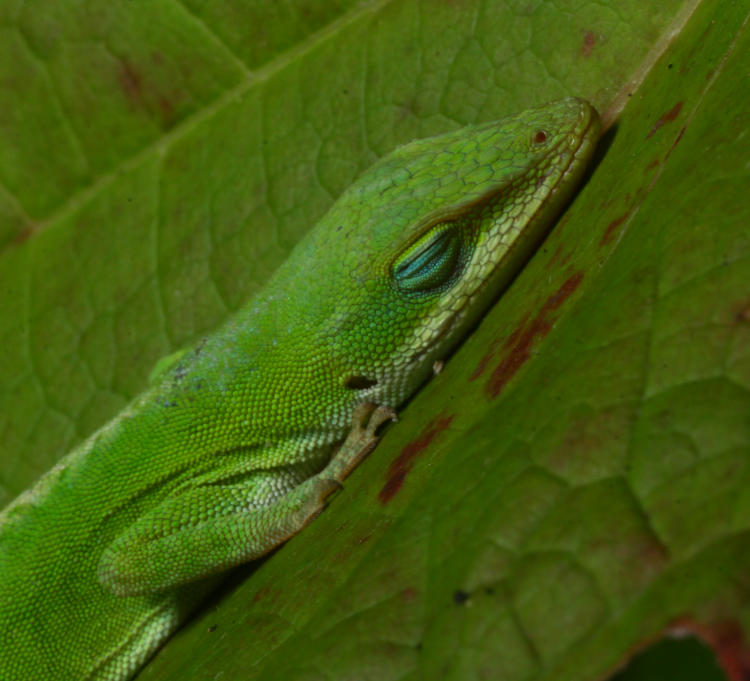
That looks fine, perhaps a little dim, though I was to determine that this was due to the aim of the softbox. It’s an adult Carolina anole (Anolis carolinensis,) by the way, not one of the newborns. It’s not a demanding subject, so I continued to prowl around.
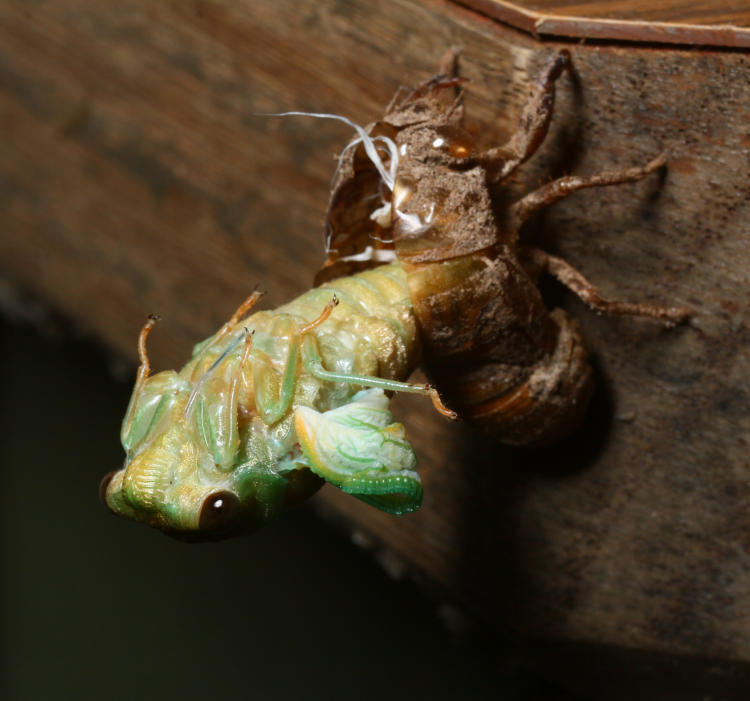
Ah, that’s better! I was too late to capture the initial stages of this cicada molting, but it was within easy view and allowed me to get on several sides, so a nice test subject. As such, we note that the light is carrying acceptably well to the background beneath/behind the cicada, better than a half-meter beyond, and pretty evenly illuminating the upper surfaces without harsh shadows. The shadows on the underside of the body are a little deeper than ideal, but this is how it’s going to be with a single light source – still contemplating that. But yes, this is as good as the old one at least.
For the record, this is possibly a Neotibicen, one of the annual cicadas – I’m not sure I could tell from the coloration at this stage and aren’t even bothering to try, because we’re doing lighting tests here and you shouldn’t be getting distracted. Still, while here we will note the white threads visible from the gap in the molted exoskeleton, which are actually the lining of its lungs, or what passes for such among most of the arthropods. Seriously, go to that link, it’s weird but fascinating.
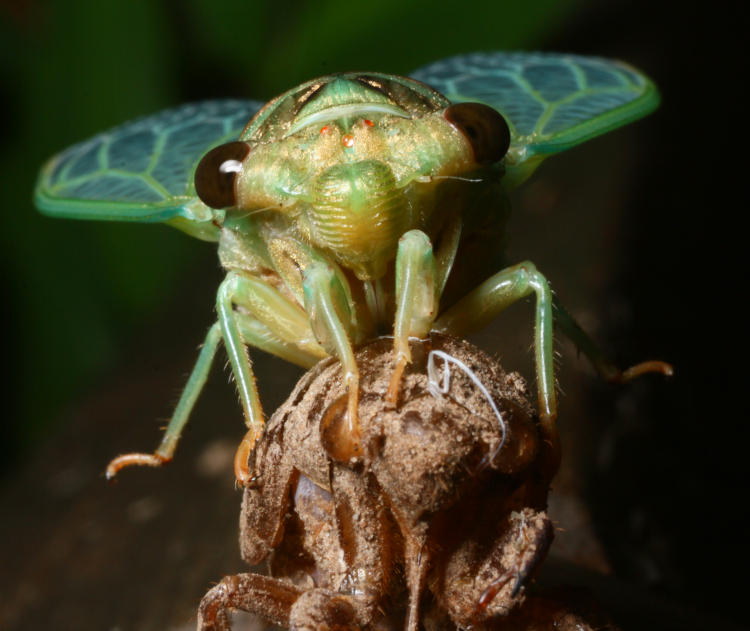
Just a little later – I’d gone back into Walkabout Studios to get further lenses for more tests in the interim, and now the cicada has fully molted and the wings are extending. It has lived almost its entire life underground up until this point, having now dug itself out of the ground to molt into its final instar, reproducing adult phase, to then go high into trees and produce the unmistakable whine of summer days. But again, lighting. Let’s have a closer look:
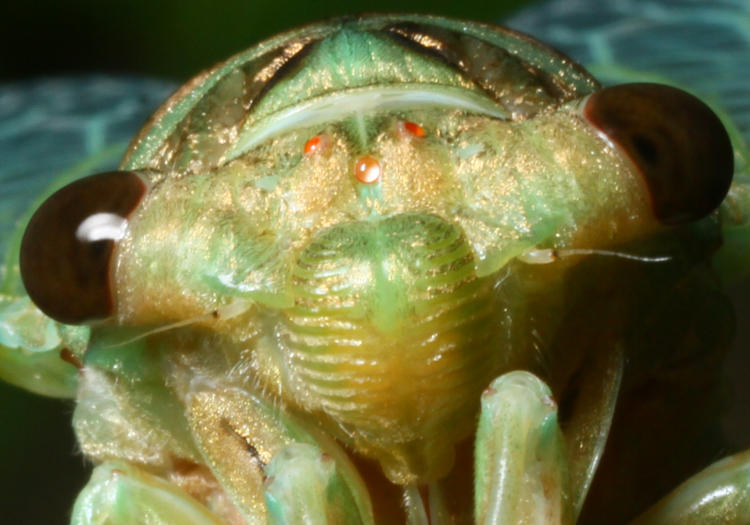
The colors and the faint translucence of the exoskeleton at this point are great and all, but the point here is why I even use the flash on an arm in the first place, and that’s modeling. The shape of the head is defined by the faint shadows, which doesn’t work very well with on-camera flash (when it can even be aimed this close to the lens) and not at all with ring flashes which surround the lens and produce virtually no shadows at all. Having the flash on an adjustable arm means I can aim it at will, tailored to the subject.
I’ll point out here the reflection of the flash itself in the eye of the cicada, which isn’t a nice clear circle, but has ‘hotspots’ of uneven light – this shows better with my final subject of the evening.
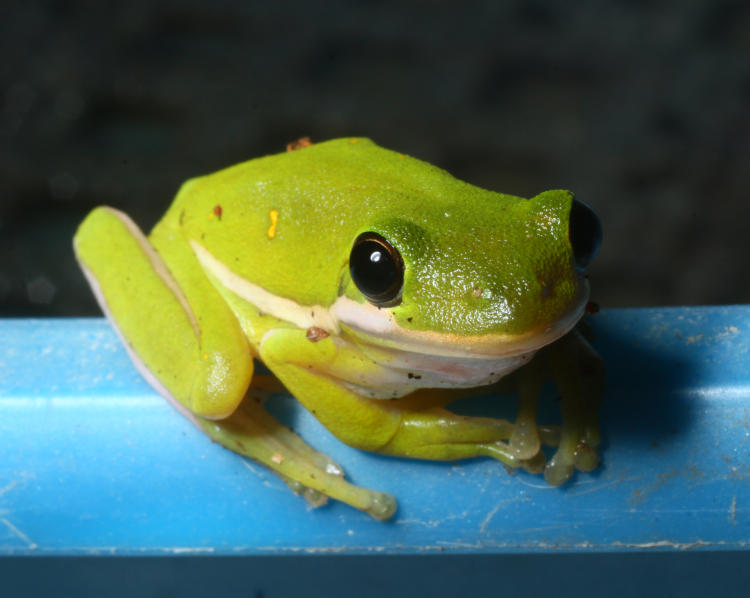
Highly reflective subjects, which I tackle more than occasionally, show the reason why I opted for a circular diffuser in the first place, because a circular reflection is the most natural-looking and easiest to ignore. Am I the only one that sees the uneven nature of it? Probably not, to be honest, though the numbers of us may be so small as to be beneath notice. Still, I printed two diffusing panels, one in white and one in clear (which doesn’t come off perfectly clear from a 3D printer anyway,) and this was using the clear one. I will probably switch to the white one, which will cut down the light a little more, and run another full set of tests. Right now, however, this is working more than well enough.
The design will probably be uploaded to share among the 3D printing community, though it may well be for a fee (despite the deplorable wealth my photography already produces.) The stumbling block is, virtually no one will be using the flash units that I am, so the custom-fitted adapters will be useless to them, and I’ll either have to include instructions on how to fit the softbox to their own flash heads (not too hard at all, really,) or actually design adapters to anyone’s request, which definitely will be a paid service. Still hashing out the details.




















































